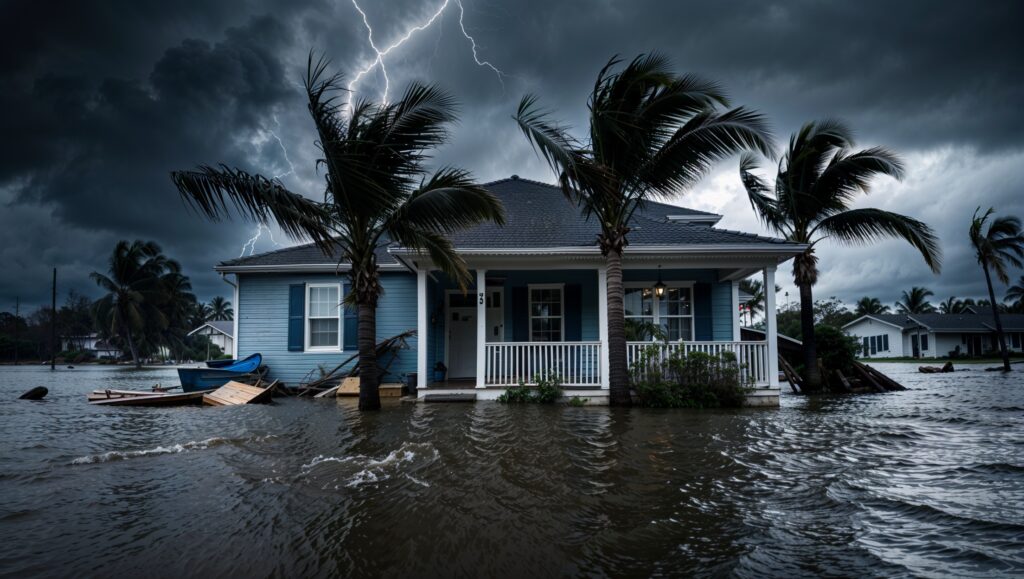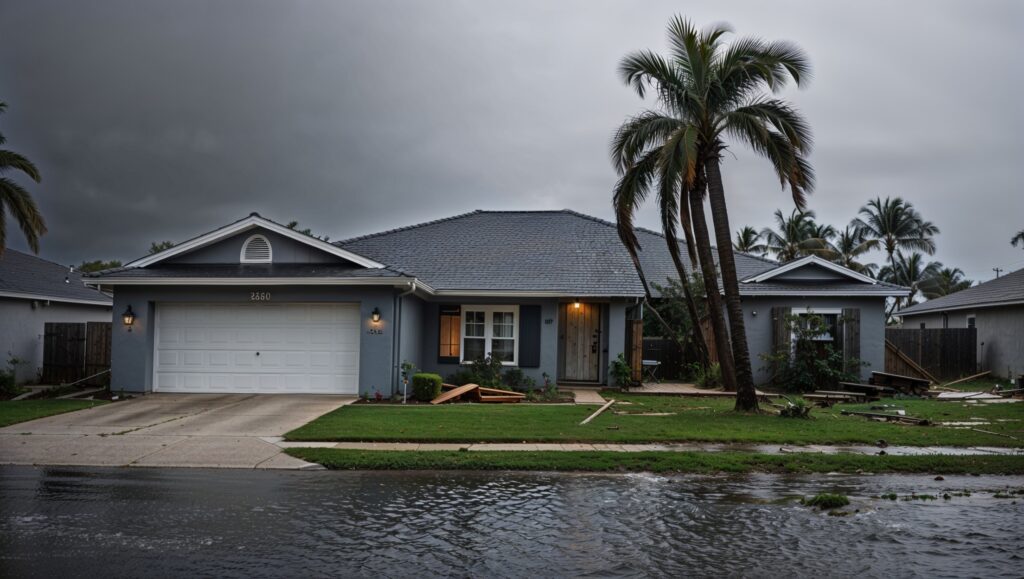The average cost of Tampa home insurance is $2,270 a year or about $189 a month for a $300,000 valued home. This makes homeowners coverage in Tampa almost 30% higher than the national average and rates are projected to go up even further.
With Tampa’s vulnerability to hurricanes, flooding, and other weather-related risks, having the right homeowners insurance policy is crucial. In this article, we’ll give you a complete guide to Tampa homeowners insurance, including coverage options, costs, top insurers, and useful tips for saving money.

Understanding Home Insurance in Tampa
What Does Home Insurance Cover?
Home insurance policies in Tampa generally include the following coverage types:
- Dwelling Coverage: Protects the structure of your home, including walls, roof, and built-in appliances, from damages caused by covered perils.
- Personal Property Coverage: Covers your personal belongings, such as furniture, electronics, and clothing, in case of theft or damage.
- Liability Protection: Provides financial protection if someone is injured on your property and decides to sue.
Additional Living Expenses (ALE): Covers the cost of temporary housing if your home becomes uninhabitable due to a covered peril.
Common Risks To Homeowners in Tampa, Florida
Tampa homeowners face unique risks, including:
- Hurricanes and Tropical Storms: Tampa’s location makes it prone to hurricanes, which can cause significant wind and water damage.
- Flooding: Many areas in Tampa are designated flood zones, making flood insurance a crucial add-on.
High Humidity: This can lead to mold issues, which standard policies might now always cover.
The Cost of Home Insurance in Tampa
Average Premiums
The average cost of home insurance in Tampa is higher than the national average, typically ranging from $2,200 to over $3,400 annually on higher-valued properties. Factors affecting premiums include:
- Home Value: Higher-value homes generally have higher premiums.
- Location: Proximity to flood zones or high-crime areas increases risk.
- Coverage Limits: Comprehensive policies with higher limits cost more.
- Deductibles: Lower deductibles result in higher premiums.
Additional Costs
Tampa homeowners may need:
- Flood Insurance: The average cost is around $700 annually.
- Hurricane Deductibles: These are typically a percentage of your home’s insured value, ranging from 2% to 5%.

How to Save Money on Tampa Home Insurance
- Bundle Policies
Combine your home insurance with auto or other policies to get a discount, often up to 20%.
- Increase Your Deductible
Opt for a higher deductible to lower your premium. Ensure you can afford the out-of-pocket cost if you file a claim.
- Install Safety Features
Home improvements such as hurricane shutters, reinforced roofs, and security systems can reduce premiums by up to 15%.
- Shop Around
Compare quotes from multiple insurers to find the best deal. Use online tools and work with local agents familiar with Tampa’s risks.
- Maintain a Good Credit Score
Many insurers use credit scores to determine premiums. Improving your credit score can lead to lower rates.
- Ask About Discounts
Look for discounts such as new home, claim-free, or loyalty discounts.
Tampa Home Insurance Laws and Requirements
Florida State Requirements
- Home Insurance Is Not Mandatory: Florida law does not require home insurance, but mortgage lenders usually do.
- Hurricane Deductibles: Florida mandates a separate deductible for hurricane-related claims.
Flood Insurance Requirements
If your home is in a FEMA-designated flood zone, your mortgage lender may require flood insurance.
Additional Coverage Options To Consider For Tampa Homeowners
Flood Insurance: Essential for homes in flood-prone areas.
Windstorm Insurance: Covers damage caused by high winds during hurricanes.
Sinkhole Coverage: Tampa’s karst terrain makes this a valuable add-on.
Umbrella Insurance: Provides additional liability protection.
Mold Insurance: Protects against damages caused by mold due to Tampa’s humidity.
Steps to Choose the Right Home Insurance Coverage In Tampa
1. Assess Your Needs
- Evaluate your home’s location, age, and value.
- Consider additional risks like flooding or sinkholes.
2. Compare Policies
- Review coverage options, limits, and exclusions.
- Compare deductibles and premiums.
3. Check Insurer Reputation
- Research customer reviews and ratings.
- Look for insurers with strong financial stability.
4. Consult a Local Agent
Local agents understand Tampa’s unique risks and can help tailor policies to your needs.

Tips for a Smooth Claims Process
Step 1: Document the Damage
As soon as you notice damage to your property, take photos and videos. Capture all affected areas and items, making detailed notes about the extent of the damage. This evidence is crucial for your claim.
Step 2: Review Your Policy
Check your homeowner’s insurance policy to understand your coverage. Look for information on deductibles, exclusions, and limits. Pay attention to specific clauses relevant to Florida, such as hurricane or flood coverage.
Step 3: Contact Your Insurer
Notify your insurance company immediately. Provide them with details about the incident and initiate the claims process. They may guide you on the next steps and assign a claims adjuster.
Step 4: Temporary Repairs
Prevent further damage by making temporary repairs, such as covering broken windows or leaking roofs. Keep all receipts, as these costs may be reimbursed.
Step 5: Meet with the Adjuster
Your insurer will send an adjuster to assess the damage. Be present during the inspection to answer questions and ensure all damages are noted.
Step 6: Submit Required Documentation
Fill out claim forms and submit them along with the evidence you’ve gathered. Include repair estimates if requested.
Step 7: Wait for the Settlement
The insurer will review your claim and offer a settlement. If the amount seems unfair, you can negotiate or hire a public adjuster for support.
Step 8: Repairs and Final Steps
Once the settlement is approved, hire a licensed contractor to repair your home. Keep all final invoices for your records.
The Final Word On Tampa Home Insurance
Home insurance is a vital investment for Tampa homeowners that gives peace of mind and financial protection against unforeseen events. By understanding your risks, comparing policies, and leveraging discounts, you can secure comprehensive homeowners insurance coverage in Tampa that fits your budget. Compare free home insurance quotes online in minutes. Save hundreds with direct rates.


